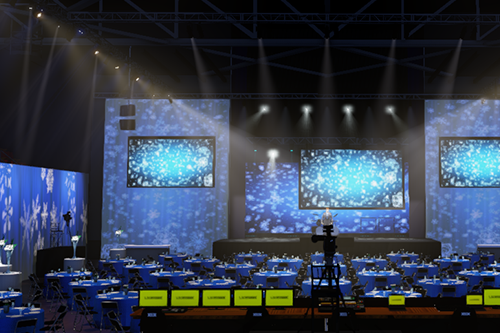Highlighting the Impact of Illumination Methods on the Art of Film Projection Mapping
Highlighting the Impact of Illumination Methods on the Art of Film Projection Mapping
Blog Article
Motion projection projection is an innovative art form that combines technology and creativity to transform ordinary surfaces into extraordinary visual exhibits. This technique entails casting graphics and footage onto three-dimensional objects, such as structures, sculptures, or platforms. One of the most crucial elements in producing effective projection in the use of effective illumination techniques. Proper illumination enhances the aesthetic elements of the display and ensures that the visuals are clear and captivating. This article examines the impact of illumination techniques on motion projection and how they can enhance the complete encounter.
Lighting plays a crucial role in video projection because it sets the atmosphere and feel of the exhibit. Different lighting techniques can elicit various feelings and responses from the viewers. For instance, using gentle, cozy illumination can create a inviting atmosphere, while bright, cold illumination may create a more dynamic or intense effect. By carefully choosing illumination hues and intensities, artists can manipulate how viewers interpret the displayed visuals, leading to a more immersive experience. The balance between projection brightness and ambient illumination is crucial, as it can greatly impact the visibility and impact of the visuals.
In addition, color and intensity, the angle of light also influences the effectiveness of mapping. Illumination from different directions can generate contrast and accents that introduce depth to the projected images. see this here This technique, known as chiaroscuro, can enhance the 3D quality of the subjects being projected. Additionally, using dynamic illumination can introduce dynamism to the display, making the experience more engaging for the audience. When the light interacts with the projected visuals, it can create an illusion of movement and transformation, capturing the viewers' attention.
Another essential aspect of illumination in mapping in the use of unique features. Methods such as patterned illumination, which employs shapes and forms to project light, discover here can introduce depth and intricacy to the mapping. This method allows artists to layer images and produce aesthetically captivating results that enhance the projection. Moreover, adding laser lights or light-emitting diode illumination can additionally improve the exhibit, providing a distinct mix of sight components that attract the viewers in. These special effects, when used thoughtfully, can elevate the projection beyond a simple display to an immersive work of art.
In conclusion, the influence of illumination methods on motion mapping is significant. By comprehending how various lighting elements interact with projected images, artists can produce enthralling encounters that resonate with audience. The thoughtful choosing of hue, brightness, angle, and special effects allows for a rich tapestry of sight narrative. As tech advances to evolve, the possibilities for creative expression in projection will only grow, making illumination an increasingly vital aspect in this innovative art form.